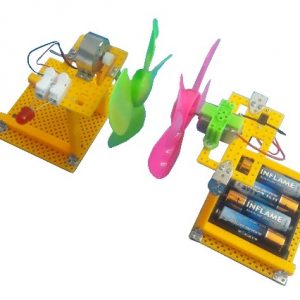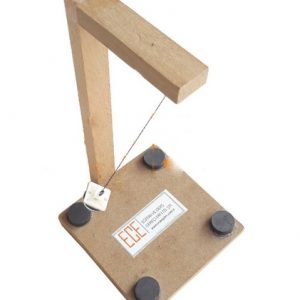Description
- It is a STEAM material for our students and other users, where they can acquire the scientific gains of the wind energy concept and at the same time develop their manual and mental skills. It is presented in its special box, along with Turkish assembly manual.
- The product has been prepared in ECE workshops, under the supervision of the R&D group, with quality materials that are harmless to health and can be installed quickly and easily.
- Compatible with the curriculum
- Suitable for school, projects, experiments, hobby studies
- The experiment is carried out by the user using the materials provided in the package.
- The product is presented in a kraft box
- A printed installation manual is included.
- 4 AA batteries required for the experiment will be supplied by the user
- Product size: 106mm x 150mm x 50mm (Assembled)
Product Content:
- Wheel (4 pieces. Wheel color is sent in green, yellow, blue, black depending on stock availability)
- Three-bladed propeller (Supplied in green, yellow, blue, orange, red and pink colors depending on stock availability)
- High speed 6V-9V DC motor
- Battery bed (4 packs)
- Circuit breaker
- MDF special laser cut table (Chassis)
- Special laser cut wooden shaft bearings (4 pieces)
- Wooden wedge connecting the engine to the chassis
- Special spindle (2 pieces)
Printed application guide (Brief information about the experiment, how to conduct the experiment, the gains to be obtained from the experiment, questions to guide research on the experiment, questions to observe and benefit from the gains to be obtained from the experiment in daily life)
Targeted Gains:
- Gives examples of ways to benefit from wind energy.
- Explains energy sources whose origin is wind.
- Based on energy transformations, he concludes that energy is conserved.
- Energy conservation explains its transfer and infers that energy can be transformed from one type to another.
- Gives examples of renewable and non-renewable energy sources.
- Conducts and presents research on the use of renewable and non-renewable energy resources.
- Emphasizes the importance of using renewable energy sources.
- Makes a design that can be an example for the use of renewable energy resources.
- Explains what recycling is and its necessity with examples.
- Implements recycling practices in his environment.
- Compares and presents the advantages and disadvantages (cost, environmental pollution, etc.) of renewable and non-renewable energy sources, taking into account society, technology and environmental factors.
- Explains the contribution of renewable energy to the economy.
- Explains in which regions of our country wind energy investments are made more and the reasons.
- Understands that energy cannot be stored, therefore the need for renewable energies increases day by day.
- Compares the effects of various surfaces (carpet, concrete, ice, etc.) on the movements of objects.
- Observes that an object can be moved more easily on a slippery surface and more difficult on a rough surface.
- Explains the reason why it is easier to move an object on a slippery surface and more difficult on a rough surface, with the difference in rubbing surfaces.
- Defines the force between the surface and the object that makes the movement of the object difficult or prevents it as friction force.
- States that friction is a contact force.
- Gives examples of the effects of friction in daily life.
- Measures the distance the object travels and how long it takes to travel this distance.
- Calculates the speed of the object using the distance traveled and time elapsed.
- Expresses and uses speed units.
- Explains the relationship between distance traveled, time elapsed and speed and applies it to different situations.
- Shows graphically the relationship between the distance traveled by an object and the elapsed time and interprets the graph.
- Realizes that moving objects have motion energy.
- Explores various types of energy and gives examples of transformations between them.
- Realizes that the amount of electrical energy used per unit time by electrically powered vehicles may differ.
- Refers to the electrical energy consumed per unit time by vehicles running on electrical energy, as the power of that vehicle.
- Realizes that the amount of electrical energy used in vehicles powered by electrical energy varies according to the power of the vehicle and the time it is operated.










Reviews
There are no reviews yet.